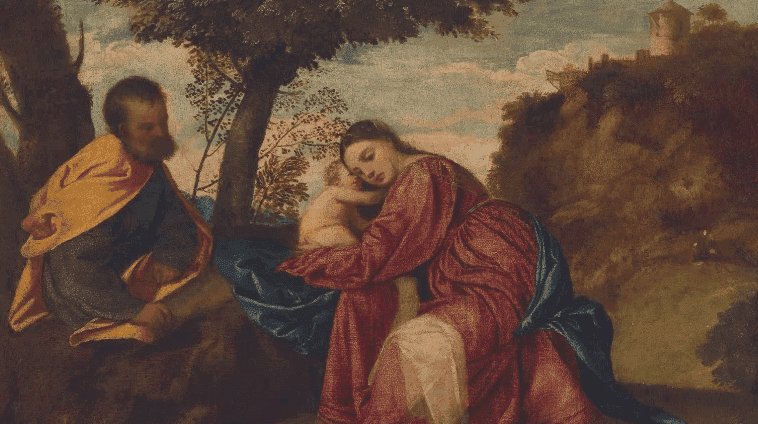A twice-stolen painting made its first public auction appearance in more than 145 years, selling for over $22 million at Christie’s on Tuesday — a record price for the artist, Renaissance painter Titian.
Created by the celebrated artist around 1510, the painting, titled “Rest on the Flight into Egypt,” has a detailed and tumultuous provenance dating back to the early 1600s, when it was noted as a part of the collection of a Venetian spice merchant.
“This is the most important work by Titian to come to the auction market in more than a generation and one of the very few masterpieces by the artist remaining in private hands,” Andrew Fletcher, Christie's global head of the Old Masters Department, said in a release.
It was then acquired by the 1st Duke of Hamilton and sent to England, where it would find its way to Archduke Leopold Wilhelm of Austria following the Duke’s 1649 execution. It was passed down through the royal family for generations, eventually making its way to the Belvedere Palace in Vienna in 1781.
There, the painting was stolen for the first time, looted by French troops in 1809 for Napoleon.
After multiple subsequent owners, the painting was auctioned by Christie’s in 1878 and bought by the 4th Marquess of Bath.
In 1995, the painting was stolen again, this time taking seven years for its recovery, when art detective and former Scotland Yard officer Charles Hill found it in a plastic bag. At the time of its recovery, Italian officials valued the painting at $7 million.
Tuesday’s sale notched an all-time record for the artist, validating the auction house’s claims of the significance of the work.
“Of impeccable provenance and having passed through the hands of Dukes, Archdukes and Holy Roman Emperors, this magical devotional painting has the rare notoriety of having been stolen not once but twice – firstly by Napoleon and secondly in the late mid-1990s,” Orlando Rock, chairman of Christie’s UK, said in a statement.
Will Stern is a reporter and editor for cllct.

